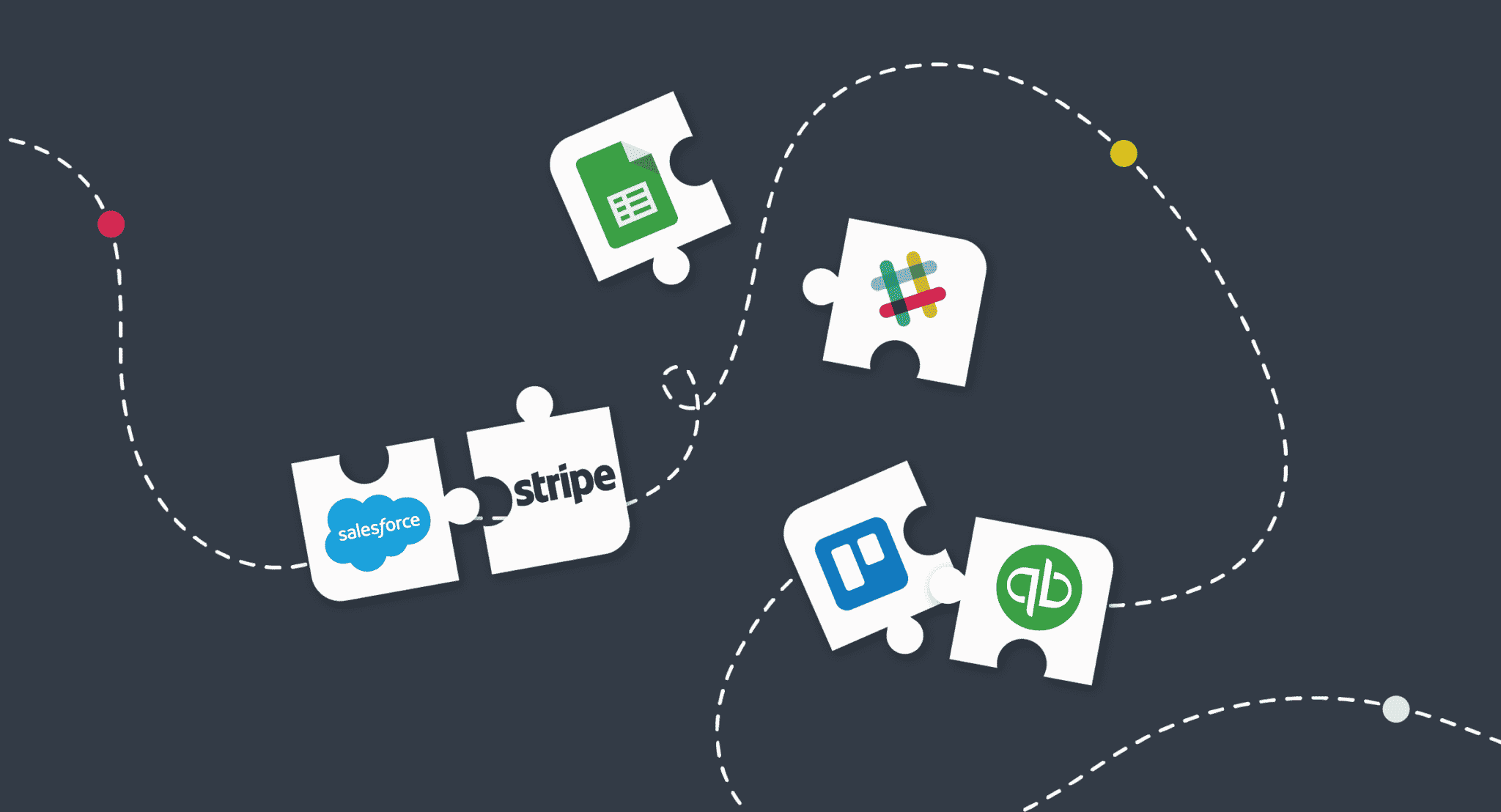
Updated on by Hayley Brown
What is SaaS integration?
SaaS integration is the process of creating pathways to allow different software platforms, run either on cloud-based or on-premise to share data. This is made possible with APIs or Connectors as we call them.
APIs are pre-built interfaces with methods and endpoints used during integrations. Once APIs are connected they can communicate with each other and request information and share data with other applications.
As a result, an application that needs the information created in another can be automatically sent or added. Without SaaS integration, the data would have to be entered manually from one app to another. This is time-consuming and prone to human error.
SaaS Integration Example
One example of SaaS integration is if you run an eCommerce website on the platform Shopify, but your accounting team uses Quickbooks and your distributors use the inventory software Salespad. All three applications need the data from Shopify to fulfil the customer order.
The data could be added manually input for all three and every order that comes in after, but this is very time-consuming. By using SaaS integration it happens automatically for you.
Another example would be adding new leads from your website form captures to your sales and marketing applications, as well as your CRM system.
The possibilities with SaaS integration are endless and the ability to expand your product functionality in a variety of ways if highly attractive to prospective customers.
Which do you need SaaS integration, App integration and API integration?
Funnily enough they are all the same and can all be used interchangeably to address the same thing. Even using integration alone is enough.
As we mentioned before APIs are the methods used to achieve integrations by sending instructions to different applications. Traditionally, though with technical knowledge such as developers would build integrations. Now however with the rise of iPaaS and embedded iPaaS building integrations is much simpler and quicker with low code tools.
Meaning anyone who understands the data flow can create integrations without needing the technical knowhow.
SaaS Integration Benefits
Save Substantial Time
There are a number of benefits to SaaS integration, but firstly the most obvious the amount of time saved when automations are implemented. Other than setting up the integrations no more time is spent and no manual data entry.
Reduce Human Error
Manual data entry can be prone to numerous errors, we are human after all. However these could be costly mistakes with integration this is eliminated as the information is automatically goes from one app to another.
Increase Transparency
SaaS integration means the right information is right in front of the right teams at the right time. With data being automatically shared between applications teams can be kept up to date and make informed decisions, rather than working in data silos.
Improve Customer and Employee Experience
Things happen fast these days or at least that is what people have come to expect. With connected applications processes are in place and ready to go when a new order comes in, a booking has been made or a payment has been processed. Resulting in better customer service and experience.
Makes Processes Scalable
With integrations, they can grow as you do from Startup to Enterprise. This is because they are a key component of automation strategies and help progress your digital strategy and digital transformation.